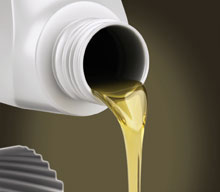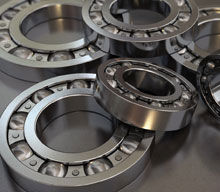Overview
All automotive crankcase lubricants need additives, at total concentrations (as sold) of typically 10 - 30%. Lubricant additives help provide the performance necessary for efficient operation and prolonged engine life.
No single additive component can do everything. Several additive components are needed to deliver the performance required. Performance requirements change as engine design, operating conditions, legislation, and source of supply and processing methods of the base oil change. Several additive components of different chemistry are used, at concentrations (in the finished lubricant) from 0.005% to more than 10%.
Until the 1930s crankcase engine oils contained no additives, comprising only base oils. Oil drain intervals were necessarily very short (1,500 km or less) to ensure adequate lubrication. The existing oil classification system, first adopted in America in 1911 by SAE (American Society of Automotive Engineers) was related only to oil viscosity and not performance.
However, due to increasing consumer demands and economic pressures, internal combustion engines were becoming more sophisticated. Engine oils were becoming more stressed, giving rise to a need for additives.
Lubricant additives fall into two categories:
- those protecting metal surfaces in the engine, such as anti-wear, anti-rust, anticorrosion and friction modifier additives; and,
- those reinforcing base stock performance, such as antioxidants, dispersants, viscosity modifiers and pour point depressants.
The evolution of modern transportation technologies would be impossible without the development of advanced lubricant additives.























